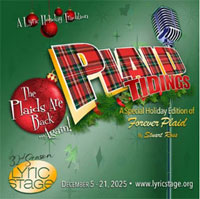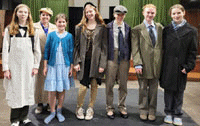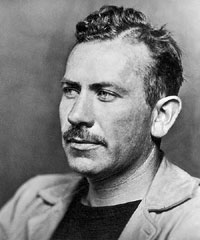Front Page
-
There are empty chairs at thousands of tables for Texas families devastated by deadly drunk driving crashes. As Texans gather to celebrate this time of year, the Texas Department of Transportation (TxDOT) is urging Texans to extend their well-known kindness and courtesy to others on the road and always choose a sober ride.
-
The Federal Home Loan Bank of Dallas (FHLB Dallas) has awarded more than $4.3 million in Pathway Fund grants to assist 42 organizations with preventing or remediating heirs’ property issues, such as resolving issues with a property title or establishing a will.
-
Lyric Stage presents an encore performance of Forever Plaid – Plaid Tidings, running December 5–21 at the Lyric Stage Studio (1170 Quaker St., Dallas, TX 75207). This family-friendly holiday musical follows Francis, Jinx, Smudge, and Sparky as they return to Earth for a harmony-filled Christmas performance.
-
The holiday season isn’t complete without experiencing this Christmas classic, It's a Wonderful Life. Theater For Hope is excited to present their Christmas present to the local community and families December 18, 19, 20 at 7 p.m. and December 20 at 2:00 p.m. at Hope on Houston located at 901 E. Houston Street in Sherman, TX. Tickets are $12 and can be purchased online.
-
Kidz Krew Christmas Dinner Theatre will have two shows only. Friday, Dec. 19 and Saturday, Dec. 20 at 7:00 p.m. in the main gallery of the art center. Tickets are $20 each and include dinner and the show. Tickets must be purchased in advance before noon on Dec. 18 or before they are sold out. No tickets will be sold at the door.
-
1968 – death of John Steinbeck, American novelist and short story writer, Nobel Prize laureate. John Ernst Steinbeck (February 27, 1902 – December 20, 1968) was an American writer. He won the 1962 Nobel Prize in Literature "for his realistic and imaginative writings, combining as they do sympathetic humor and keen social perception." He has been called "a giant of American letters." During his writing career, he authored 33 books, with one book coauthored alongside Edward Ricketts, including 16 novels, six non-fiction books, and two collections of short stories. He is widely known for the comic novels Tortilla Flat (1935) and Cannery Row (1945), the multigeneration epic East of Eden (1952), and the novellas The Red Pony (1933) and Of Mice and Men (1937). The Pulitzer Prize–winning The Grapes of Wrath (1939) is considered Steinbeck's masterpiece and part of the American literary canon. By the 75th anniversary of its publishing date, it had sold 14 million copies. Much of Steinbeck's work employs settings in his native central California, particularly in the Salinas Valley and the California Coast Ranges region. His works frequently explored the themes of fate and injustice, especially as applied to downtrodden or everyman protagonists.




















